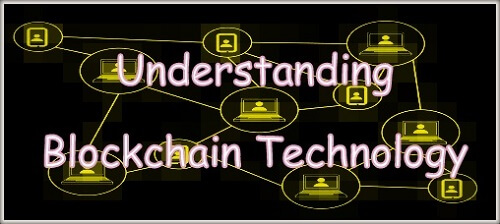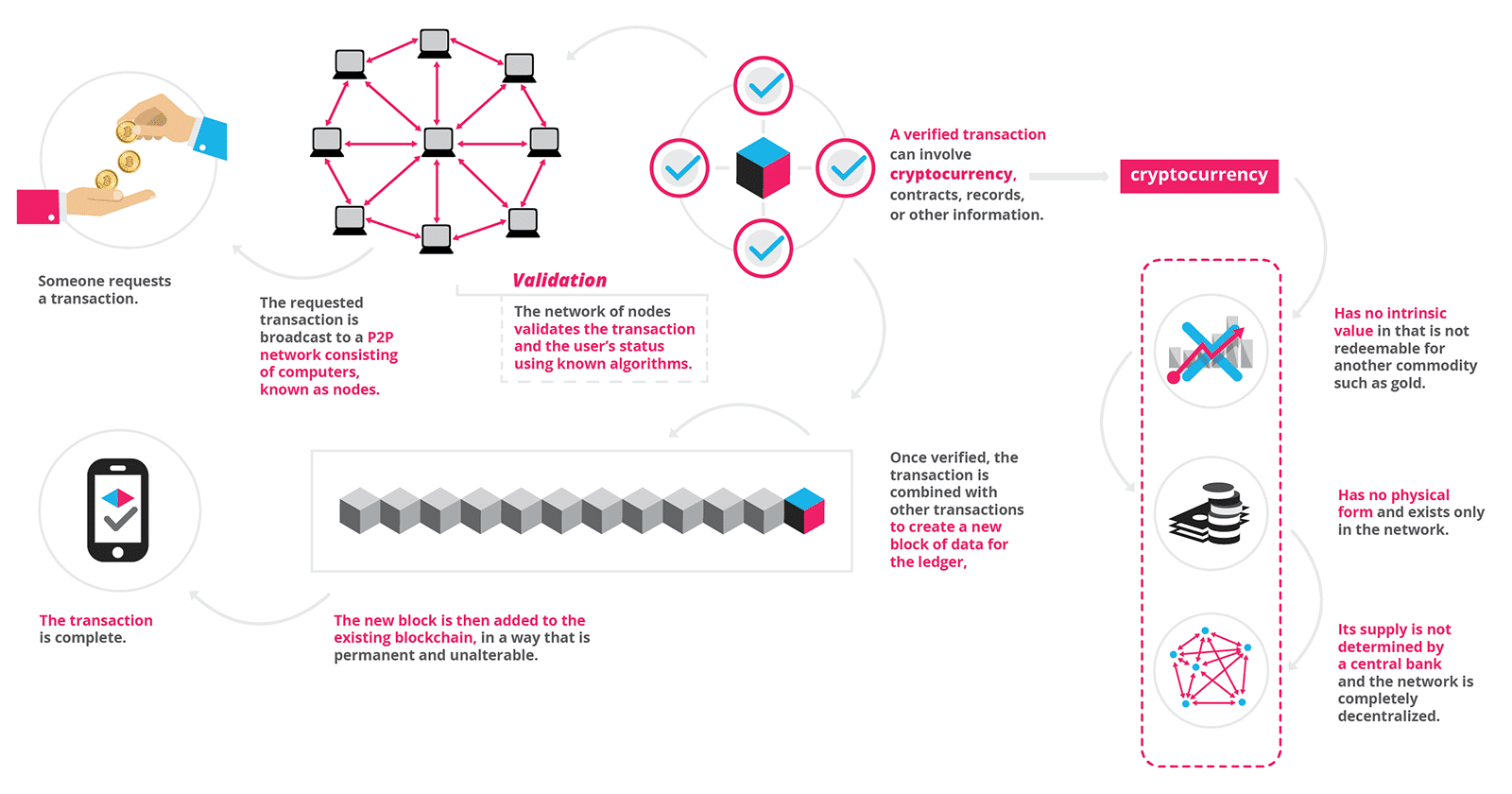Blockchain Technology Essentials
What is Blockchain Technology?
Blockchain Technology is literally everywhere nowadays.
This is because the organizations are replacing the existing technologies with blockchain technology. From Government sector to start-up organizations to voting phenomenon to even banking transactions, it is just all over.
A technology which was initially only started to support Satoshi Nakamoto’s Bitcoin is now emerging as an ingenious technology in the digital world. This is because it surpasses the middlemen like banks and governments to pass the digital currency across the World borders. Therefore many organizations are turning towards Blockchain Development for crowdfunding and other customs.
Blockchain Technology by definition from Wikipedia:
[su_quote]A blockchain facilitates secure online transactions. A blockchain is a decentralized and distributed digital ledger that is used to record transactions across many computers so that the record cannot be altered retroactively without the alteration of all subsequent blocks and the collusion of the network.[/su_quote] And now in the non-technical jargon:[su_quote]A Blockchain Technology supports the maintenance of a digital ledger which is responsible for securely making and recording anything that requires a proof of being taken place. The records can be anything like making transactions, agreement sharing, contract exchange, virtually everything of value.[/su_quote]
Infographic Source: Blockgeeks
What is a Block in Blockchain?
To understand blockchain let us first understand the meaning of Block in blockchain.
“A block is a record of new transactions. These transactions can be financial records, contracts, medical data, voting data, location of cryptocurrency, or any such similar information. Just as a block is completed (whole transaction is recorded) it adds to the chain of blocks. Hence creating a Blockchain.”
Blockchain Technology functions on Distributed Database
The digital information in Blockchain Technology is distributed, and not copied unlike other technology databases. This is what makes the backbone of this digital technology. The information recorded in the blockchain subsists as shared and constantly reconciled database.
The blockchain database isn’t stored in any single location, meaning the records it keeps are truly public and easily verifiable. It is an extremely secure database as no centralized form of this information exists for a hacker to corrupt. Since it is hosted by zillions of computers concurrently. Therefore its data is manageable by anyone on the distributed network (internet).
Moreover a distributed network reduces the risk of centralized corruption or failure. Therefore the records on the blockchain are foolproof.
Understanding Blockchain as Google Docs
William Mougayar, author of StartUp Management explains the Blockchain technology via Google Docs analogy.
The most aware of conventional form of sharing and managing a document is by sending a Word Document over email or any other similar source. And then asking to revert with the desired changes. As a matter of fact you cannot edit the document until the other person makes the changes and sends a copy. Because the other person is still working on it.
This is exactly how majority of today’s databases work. No two owners can work on the same record at the same time. Furthermore the banking organizations also work in this manner. They lock the access from the other end while making a transaction or transferring money. And then update the other end or re-open the access after the completion of the transaction.
While Google Docs shares the access of a single document with multiple users at the same time.
This means that multiple users can edit a single document at the same time. And the changes will be visible to everyone on that document. It is similar to a shared ledger. The distributed part holds true when the sharing involves a bunch of users.
In fact it is much easier to share the legal and other important documents in comparison to transfer them back and forth.
Well of course you do not need blockchain technology to share documents. But the powerful analogy makes it quite simple to understand the basics of blockchain.
Key Features of Blockchain Technology
Firm Digital Trust
It is always difficult to evaluate trust between different corps. In particular, in the digital world the trust definition condenses to proving identity (authentication) and proving permissions (authorization).
In other words the main questions for digital trust leverage are; ‘Are you who you say you are?’ and ‘Should you be able to do what you are trying to do?’
Blockchain technology supports private key cryptography which is
…the form of encryption where only a single private key can encrypt and decrypt information.
Therefore it provides a strong ownership method which accomplishes the authentication requirements. Because of this single key encryption the user does not have to share sensitive information like credit card details. Therefore saving themselves from the frauds and hackers.
Having said that, authentication alone is not enough.
Authorization, or having enough money, giving out the correct transaction type, etc. need a distributed, peer-to-peer network as a starting point. So as to reduce the risk of centralized fraud or failure.
Authentication and authorization both are crucial for digital transactions. And it is safe to say that these both make recognition by the configuration of blockchain technology. Henceforth any requisite of reliable structure of record can utilize this technology eradicating the trust judgement.
Strong and Vigorous
Blockchain technology is similar to the internet in terms of its built-in robustness. Because it stores the blocks with recorded information across its distributed network. Therefore:
- A single entity cannot control it, and
- It cannot have a single point of failure.
As said by Ian Khan, TEDx Speaker :
As revolutionary as it sounds, Blockchain truly is a mechanism to bring everyone to the highest degree of accountability. No more missed transactions, human or machine errors, or even an exchange that was not done with the consent of the parties involved. Above anything else, the most critical area where Blockchain helps is to guarantee the validity of a transaction by recording it not only on a main register but a connected distributed system of registers, all of which are connected through a secure validation mechanism.
Ian Khan
Transparent and Upright
The blockchain network is a kind of self-auditing network of a digital value. This means that the network resolves every transaction that happens in ten-minute intervals. Therefore blockchain technology enables:
- Transparency in data. This data is public and holds its roots within the network as a whole.
- Safe transactions because altering any record of information on the blockchain would mean consuming a vast amount of computing power to override the entire network.
It may sound doable in theory. But in practice, it’s not likely to happen. For instance, if someone tries to control the system to capture Bitcoins. Then it would affect the system negatively by destroying their value.
Summary
The Blockchain Technology gives internet users the ability to create value and authenticate digital assets. Its decentralized and distributed network allows access to multiple users at the same time, that too with no fake-up.
Interested in shifting to Blockchain Technology? Our Blockchain Developers can help!

